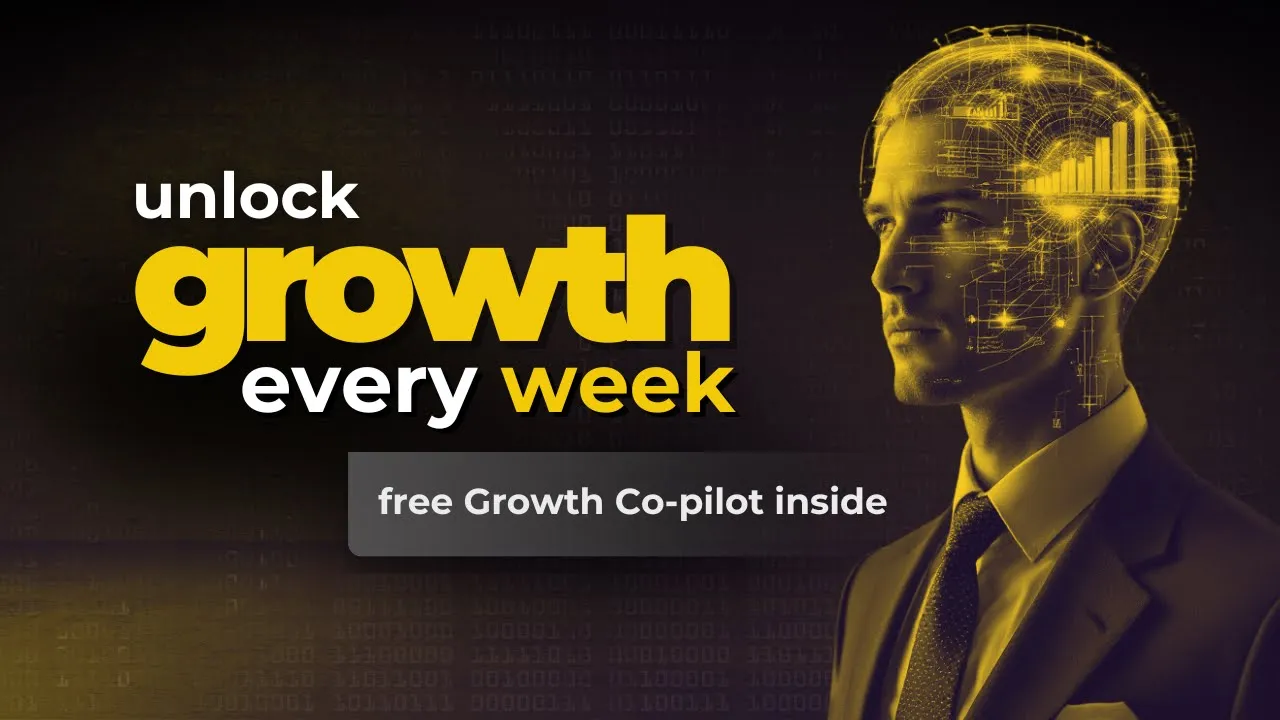
Let me tell you a story about Adam.
Adam is a CEO of a new SaaS company, and he decided to build a product-led organization.
Adam and his team did everything right: they hired a Growth team, set defined KPIs, and created a freemium product to get people in the door.
But while signups were through the roof, user retention wasn’t there.
Amy is a product manager who was asked to look at this problem. The team thought she would come back with some low-hanging fruit that they could quickly execute.
Amy found out that while the team worked on quick experiments to generate growth, they left some product-market fit problems and user experience issues on the table, which caused user retention problems.
Does this story sound familiar?
Maybe a designer on your team has been communicating that there's a lack of customer empathy in the work that the team does.
Maybe you've generated a couple of Growth teams, and they've all seen initial success, but never the sustainable product-led growth that you're looking for.
Or you're worried because you don’t have a product-led growth strategy besides growth at all costs.
In this article, I’m going to break down the difference between a quick growth hack and a quality long-term growth strategy.
We’ll look at:
- Why you should view customers as stakeholders
- The R.I.C.E. prioritization framework
- How to create buy-in
- What to avoid
- How to build your team
But first, the difference between quick wins vs. cheap growth hacks
During my time as a product manager, I've had great opportunities to work with many cross-functional teams, and while there is excitement for product-led growth, it's not immediately clear to all what the difference is between a quick growth hack and quality growth.
It’s easy to conflate the difference between a quick win and a cheap growth hack.
Quick wins are great: they put the customer first, they don’t take a lot of time to execute, they generate value, and they remove a known pain point. This can range from changing a confusing copy and removing unnecessary steps from a task for customers to adding a small treat that helps people fall in love with your product and brand.

A cheap growth hack doesn’t put the customer first, only the business.
The hack immediately drives results and pushes up the desired metric, but it doesn’t keep user experience in mind. An example of this might involve burying a cancel button behind various surveys and “are you sure?” dialogues or using some trickery to get users to purchase an annual membership when they meant to use you for only one month.
Why You Should View Customers as Stakeholders
As product managers at product-led growth companies, you have to balance various stakeholders day-to-day. Businesses achieve sustainable growth when they consider their customer as their first stakeholder. When presented with a metric that you're trying to improve, pause and think about the person behind all that data.
- Ask yourself this question:: “Why are my users behaving in this way?”
Use that to find your solution. Is your solution improving your product day-to-day? Or are you simply making destructive actions more difficult?
This doesn't mean you shouldn’t focus on business goals or drive towards defined KPIs; it means that your drive towards growth must also deliver value to the customer.
A real example of how I could pair growth with value was when I was asked to change my focus to activation at Vidyard.
More users had turned to video and were looking for ways to communicate because of the pandemic, so we saw a surge of sign-ups, and our activation rate changed.
The team asked me to take a look, and instead of diving headfirst into pushing out experiments, I paused and took some time to ask why the activation rate had changed in the first place.
I found three different reasons for this:
- We launched some paid advertising, and the messaging set customers up with a certain expectation that our in-product onboarding would not continue to deliver.
- More people were working from home, and they were uncomfortable with their new casual environment.
- While more users were checking out the idea of the video, they didn’t buy into it as our previous customers had.
As a result, we generated more sign-ups, but those users had lower intent.
The R.I.C.E Prioritization Framework
How do we avoid getting distracted by quick wins and continue to execute a long-term strategy?
The R.I.C.E model is one method to strike a balance between quick wins and long-term strategy. R.I.C.E stands for: reach, impact, confidence, and effort.
Here’s what you’ll measure:
- The reach of the change on users.
- The impact it will have on that audience.
- The confidence you have in each of your estimates.
- The effort required to deliver the set idea.
Next, you’ll use an equation to create a score for each of your ideas. Finally, you’ll be able to sort each idea based on the score to help you determine what will have the biggest impact on the lowest amount of effort.

By using this method, you’re able to find a balance of high impact, low effort, as well as high impact, medium effort.
Applying the R.I.C.E Model
The first time you do this, you might find that all of your grand ideas go to the bottom of the list because the effort required is too high.
Try to break that problem down. Is there a minimum viable product you can ship ahead of time?
For example, at Vidyard, we were asked to generate new users by focusing on user acquisition. At first, everyone was excited about it. But I wasn’t sure this would yield the results the business was after.
We shifted our focus on creating a great first-time onboarding experience. This would improve our activation and retention numbers. The problem was it was really difficult for us to try to convince people that it was worth investing in.
Which leads us to our next problem.

How to create Buy-in
So you have the strategy that you need to make your goals attainable, but how do you get the business to buy in?
To convince everyone that creating a great onboarding experience was worth investing in, we decided to use a product called app queues.
App queues allow you to create prompts and flow within your product without development effort.
We were able to:
- Build the MVP of the ideal onboarding experience that we wanted to ship to our users.
- Do an A/B test: which more than doubled our activation rate, allowing all the acquisition efforts to be more valuable.
Having these results and being able to put them on the table, not only convinced the business to kickstart a project in that area, but we created a team, an activation team.
What to Avoid
Try not to get distracted by short-term metrics.
At first, it was important to focus on increasing the number of free users signing up.
But looking at the bigger picture, we identified that activation and retention would yield better results and take us in the right direction, faster.
If we solely focused on getting more users to sign up, we would be distracted by short-term gains. By focusing our time on improving metrics later in the funnel, we were able to generate more sustained growth that we continue to see today.
How to build your team
Stop siloing your teams.
The number one mistake I've seen product-led growth companies make time and again is creating tiger teams that are solely responsible for growth. If you build teams in this way, you miss the opportunity to encourage a growth mindset in your company (among other issues).
Three reasons to avoid silos:
- You don’t have all the right people at the table: they’re solely focused on the numbers and not the people behind those numbers.
- You end up having two teams duplicating the same effort: when you have a growth team that is disjointed from your product team, you may end up with both teams doing the same thing, which costs the company money and time.
- You end up with teams that don’t communicate with each other: This results in a disjointed user experience that directly impacts the metrics you are trying to drive.

I've seen various product-led growth companies that see initial success but then dissolve when they don't see that sustained growth as a result of working in siloed teams
The current iteration of growth at Vidyard is doing well because it's a collaborative approach.
We have different squads, and they might be what you're used to in terms of engineering: there’s a dev lead, a design lead, a product lead, but it doesn't stop there.
We work closely with various people on marketing, sales, and data, and each of these squads for our purposes focuses on a step in the cycle, acquisition, activation, conversion, and paid retention.
By having all these people at the table, we're able to inspire creativity and generate growth by delivering value. Here are a couple of benefits of this approach:
- The Power of Diverse Perspective and Skills: Some people are amazing designers and great at user experience; others are great at advocating for the user at the end of the day. By creating an environment with different expertise at the table, you’re able to create one cohesive user experience.
- A collaborative workflow: Collaboration inspires creativity, and that creativity inspires innovation, driving growth by delivering value. For example, If I'm building an onboarding experience for activation, my marketing partner should generate a complimentary email system to bring people back into the product.
In Conclusion
Cheap growth hacks sound exciting. But instead, put that excitement behind the innovation that comes out of delivering value to your customer.
The next time that you're asked to look at a specific metric and drive it up, do these three first:
- Put yourself in your customer's shoes
Ask yourself why they're behaving in the way the data shows you. Instead of only looking at the numbers, think about the people behind it.
- Don't be afraid to question the metric in front of you
Don't get so narrowly focused that you’re distracted by short-term gains. Instead, look at the bigger picture. Don't be afraid to challenge the ask or change your focus to something you think is more impactful.
- Make sure you have those various opinions in the room
Collaborate and challenge each other to be innovative.
Many product managers working in product-led growth companies tend to get distracted by short-term metrics and easy hacks, especially in a world where the consumer is much more aware of these cheap wins that do not create value.
It's time we get back to our roots and start generating value.























